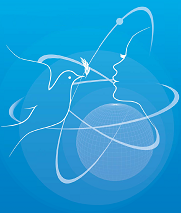Speaker
Pimporn Uttayarat
(Research and Development Division, Thailand Institute of Nuclear Technology, Thailand)
Description
Double-strand break (DSB) of DNA is considered one of the most detrimental damage caused by ionizing radiation on organisms as it can induce genetic instability, mutation, and cell death. The ability to readily assess the extent of damage and potential health risks associated with both accidental and therapeutic exposures to radiation can better serve the patients with proper medical treatments. In this present study, we aimed to develop a biodosemetric measure based on the quantification of phosphorylated variant histone H2AX (gamma-H2AX) formed at DSB sites as part of the biodosimetry project initiated by the OAP in Thailand. Human dermal fibroblasts were used as a cell culture model to be exposed to gamma radiation from a Co-60 source in a custom-made lead chamber at doses 0, 0.2, 1, 2 and 4 Gy and a dose rate of 0.21 Gy/min. The cells were fixed and immunofluorescently labeled with antibody for gamma-H2AX proteins within 30 min post exposure before evaluated by confocal microscopy and flow cytometry. The phosphorylated gamma-H2AX proteins accumulated at DSB sites appear as nuclear foci with the most prominent intensity at 4 Gy. A dose response curve constructed by flow cytometric data also showed a linear response (R2 = 0.9862) of foci intensity in proportion to irradiation dose. In terms of cell viability, trypan blue assay showed that the fraction of viable cell decreased after exposure to irradiation at 4 Gy compared to 0.2 Gy and sham control. This gamma-H2AX assay can be further developed and implemented along with other established biodosimetric measures to assess the extent of biological damage in individuals.
| Country or International Organization | Thailand |
|---|
Primary author
Pimporn Uttayarat
(Research and Development Division, Thailand Institute of Nuclear Technology, Thailand)
Co-authors
Ms
Kanokporn Boonsirichai
(Research and Development Division, Thailand Institute of Nuclear Technology (Public Organization))
Ms
Kasama Sukapirom
(Division of Instruments for Research, Office for Research and Development, Faculty of Medicine, Siriraj Hospital)
Ms
Teeranan Tangthong
(Research and Development Division, Thailand Institute of Nuclear Technology (Public Organization))

